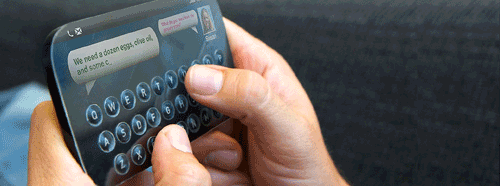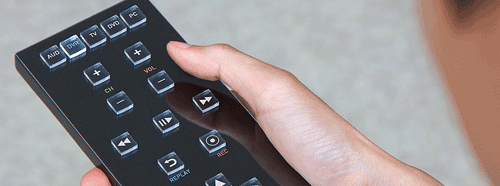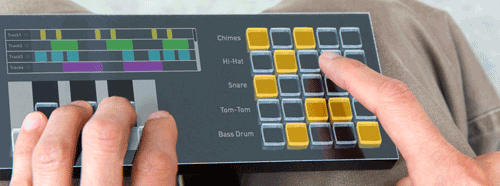Keyboard bubbles up from touchscreen when typing, deflates when done
Novel technology will provide tablet and smartphone users with amazing new way to use a physical keyboard
Now you see it, now you don’t. Tactus Technology has made its first public demonstration of an exciting new concept technology: the Tactile Layer component.

Tactus’s Tactile Layer technology provides owners of touchscreen devices with the ability to use a physical keyboard.
The technology provides owners with an appearing and disappearing haptic user interface for their smartphone or tablet device. Physical buttons, guidelines, or shapes rise from a tablet or smartphone’s flat, touchscreen surface when the user needs to punch in a phone number or write a quick message, and disappear when the app is closed.
It was presented for the first time at this week’s Society for Information Display (SID) show, where it was presented in the I-Zone, an area reserved for highlighting the newest and most innovative display technologies.
“SID is the ideal venue for the first public showing of the Tactus Tactile Layer panels — we are especially honored to be one of the few companies to be selected for participation in both the I-Zone and the Eureka Challenge,” said Dr. Craig Ciesla, CEO of Tactus Technology.
How are they doing this?
The company’s Tactile Layer technology is the world’s first deformable tactile surface. It creates actual physical buttons that a user can not only see, but also feel for the purpose of entering data into a device.
It uses an innovative form of microfluidic technology to create the buttons: a minuscule amount of fluid that comes together to form a shape on the surface. When triggered, the layer deforms, causing shapes of a specific height, size, and firmness to appear on the surface of the screen.

Tactus Technology’s Tactile Layer uses microfluidic technology to create a haptic user interface.
When they’re no longer needed, the shapes simply recede back into the touchscreen, leaving no trace of their presence behind.
While the technology is located right at the surface of the panel, the user cannot see it; that is, it looks like a completely flat, totally transparent panel. What’s more, no thickness is added to the device because the area used to store this technology simply replaces a layer of the already existing display stack.
Given that the screen and keyboard can be combined, manufacturers are now presented with the opportunity to create devices with entirely new and unique ergonomics and form factors. The technology stands to be extended beyond smartphones and tablets to also include e-books, gaming devices, navigation systems, remote controls, medical devices, automotive displays, industrial controls, and test equipment, too.

Tactus Technology’s Tactile Layer could be applied to remote controls.

Tactus Technology’s Tactile Layer could also be used for remote control.
Video
Tactus Technology worked with Touch Revolution to develop the technology. Touch is a unit of TPK Holding Company, which also happens to be the largest-volume glass projected capacitive multi-touchscreen manufacturer in the world.
“Touch Revolution is very excited to announce this new partnership with Tactus Technology — their solution is an ideal and revolutionary complement to our own industry-leading touchscreens. We are looking forward to seeing new mobile and consumer devices using our combined technologies in 2013,” said Mark Hamblin, Founder and CTO of Touch Revolution.
While we wait for the technology to officially hit the market (expected in 2013), you can see it in action in the promo video below:
Outlook
Tactus Technology has been chosen as a top 10 finalist in the Consumer Electronics Association Eureka Park Challenge as part of New York’s upcoming CE Week, taking place June 25 to 29. Electronic Products will be on-site covering the event, so make sure to check back in for updates on this exciting new technology. ■
Via: Tactus Technology
Advertisement
Learn more about Electronic Products Magazine






